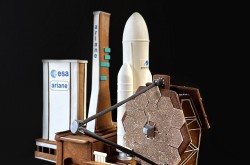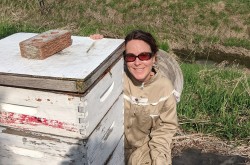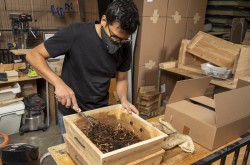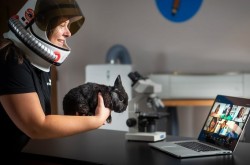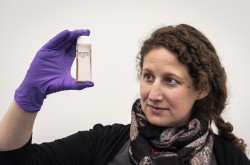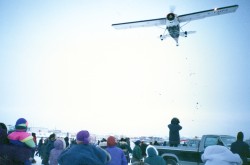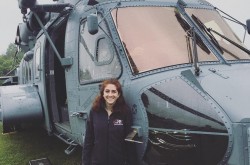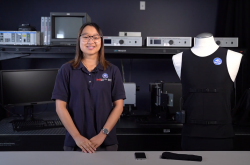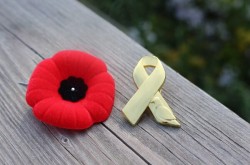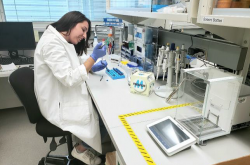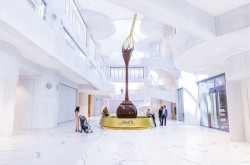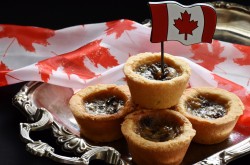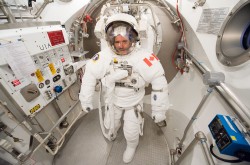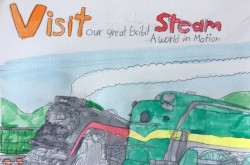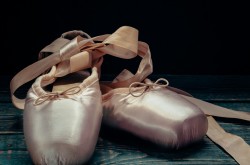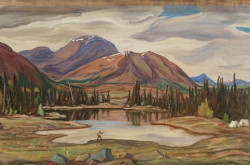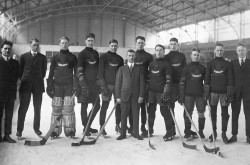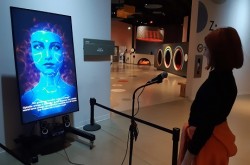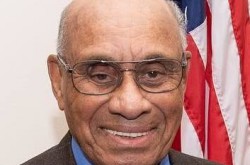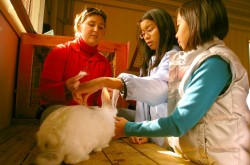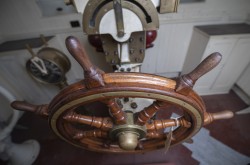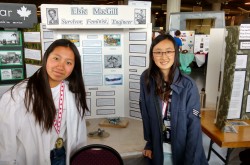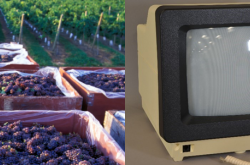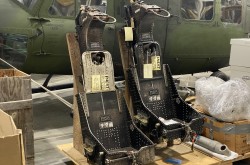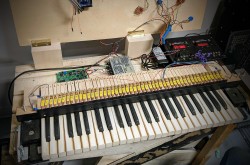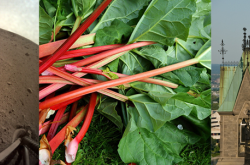Start your engines: A Ford GT Mk II is now on display in Ottawa

It looks like the Canada Science and Technology Museum is moving into the fast lane.
An incredible piece of Canadian-built technology — a Ford GT Mk II — is on temporary display for visitors at the museum in Ottawa. A supercar so potent it can only be used on the track, the GT Mk II is hand-built by Multimatic Motorsports in Markham, Ontario. Specialists in high-performance niche vehicles, this is the same team that engineered and built the Ford GT race cars, and also manufactures the Ford GT road car. First revealed at the 2019 Goodwood Festival of Speed in the UK, only 45 Ford GT Mk IIs will be built.
Scott Maxwell is a development driver for the Multimatic Motorsports race team. Over more than four decades, the 58-year-old has competed at major racing events including Le Mans, Daytona, and Sebring, among others. At the peak of his racing career, he was competing in 30 to 40 events per year. The Ingenium Channel spoke with Maxwell about his love of auto racing, his work with Multimatic, and what it feels like to drive the Ford GT Mk II.
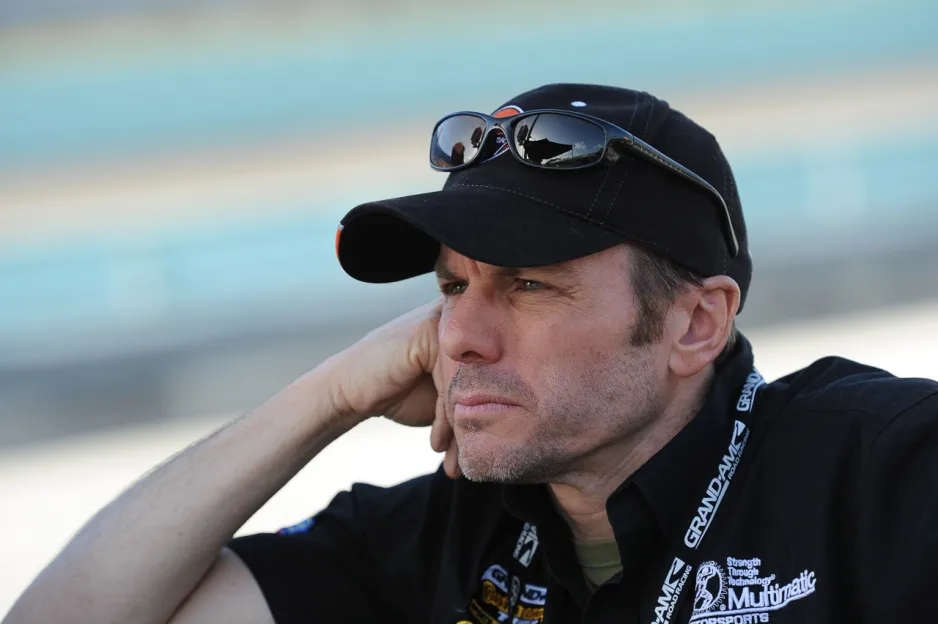
Scott Maxwell is a development driver for the Multimatic Motorsports race team.
Ingenium Channel (IC): Let’s go back to the very beginnings of your interest in driving. How early in life did you have an interest in cars, and how did you decide to pursue racing?
Scott Maxwell (SM): As far back as I can remember, I wanted to be involved with either cars or car racing. My father was a hobby racer; he was involved in the sport a little as a driver, and as a track marshal. So I grew up in and around the racetrack in the 1970s, and I picked up the passion for it early.
It's not the traditional sport; for Canadians it's all about playing hockey — which I also wanted to do — but I was way too small. Today, car racing is a lot more common but at the time, it was like I was on an island by myself. If I’d say to my friends, “You guys want to talk about car racing?” they’d all be staring at me…I was the black sheep.
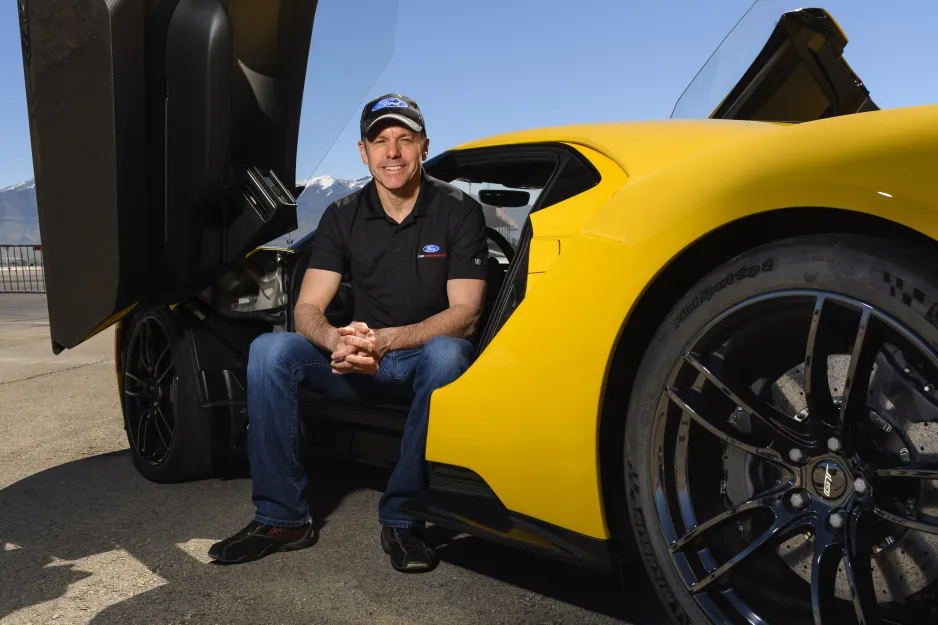
IC: Tell me about the sport of racing. How do you actually train to become a race car driver?
SM: I started racing go karts when I was 13. At that time, that was pretty normal in terms of age; now they're starting kids at six or seven years old. Karting is your entry; that's your easy entrance to motor sports. Having said that, in Canada you're restricted to seven or eight months a year, because of the weather. And unlike other sports, it's not like you can just go into your backyard — unless you have a really huge backyard — and practise, or go out on the street and hit or throw the ball or whatever your passion is. So it is limited in that sense.
The other reality is car racing is a very expensive sport; even at an entry level it's a big commitment. Now, you look at what people spend on hockey, or whichever sport; everything has become so much more technical and scientific with training and coaching. I don't think there's any sport now that’s cheap, but motorsports are a whole other level. That doesn't mean that a young man or woman can't make it in the sport; sometimes talent still does prevail. But it's a hard industry to make it in, and even harder now than it was when I was growing up.
IC: What kind of thrill do you get from racing? Would you call yourself an adrenaline junkie?
SM: When you're younger, the common reaction is an adrenaline rush over the speed, and having all that power and all that grip…and just the thrill of driving to your limit. But for me, it's more of the competition against another driver in the car — that to me is the most interesting part of it. Maybe it’s because I've been doing it so long, but after a while you don't really notice the speed anymore. It's more about making the car better, and figuring out how to be the fastest; you definitely need to have that competitive spirit.
I wouldn't consider myself at all what adrenaline junkie, and I certainly don’t have nerves of steel. But that said, I can sit in my car before a race now and literally fall asleep. I go into some sort of zone and relax, but I haven't always been like that. When I was younger, I would be much more uptight and I couldn't eat the day of a race. Now at the age of 58, this is the reality of it — compared to when I was 25, and it was still relatively new. But I still think any driver who's doesn't get that feeling right before a race, or even a qualifying session, where all your adrenaline's pumping and you're a bit nervous; if you don't get that then you’re probably in the wrong sport.
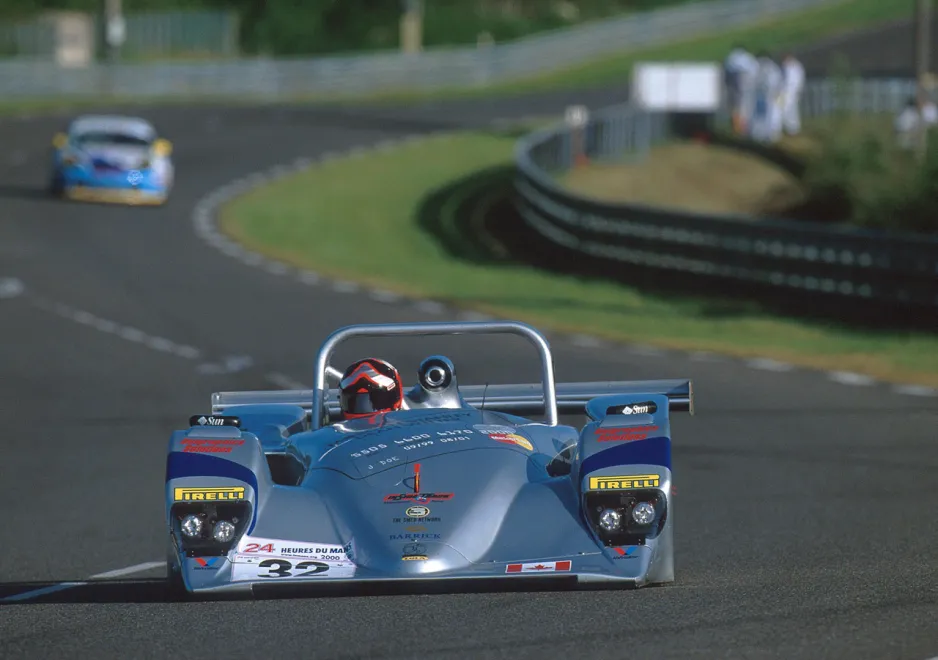
Scott Maxwell at the wheel of a SR2 Lola B2K/40 with a Multimatic designed and built chassis, at the 24 Hours of Le Mans in 2000. The Multimatic team won the LMP675 class, marking the first class win by any Canadian motorsports organization in the 68-year history of the French endurance classic.
IC: Tell me about your role with Multimatic.
SM: I started with Multimatic in the early 90s. I was racing formula cars at the time — trying to get to the IndyCar Series.
At my peak, I was doing 30 to 40 races a year; there were weekends where I'd be running three different races in three different cars. That probably went on for about 10 years 15 years — I was doing Le Mans and Daytona and Sebring and all these things on a regular basis. It was just nonstop — going from one track to another, one test to another. I loved it; I wouldn't change anything. But you can only do that for so long and then it's like any sport, it's a young man's sport. And suddenly I was 40…and how did that happen?!
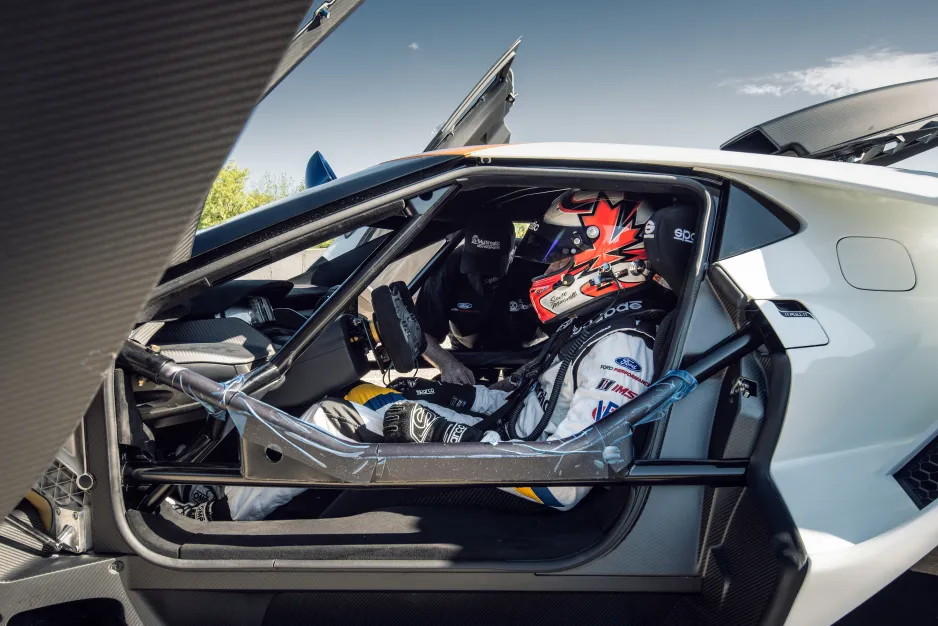
Scott Maxwell conducts shakedown testing of a new Ford GT Mk II at Calabogie Motorsport Park.
Then Larry Holt approached me and gave me an alternative; they wanted to start a race team. So Larry and I started this race team called Multimatic Motorsports — with a volunteer crew — and off we went racing. It just sort of blew up from there, in a positive way. Every year got bigger and bigger, until we had to start hiring full-time mechanics and engineers. Initially, my role was the lead driver, along with managing the team. But as it got bigger, my focus shifted to development driving, which helped me to grow new skills outside of just racing. Until then, I just hopped in a car and tried to make it go as quick as I could. What I learned with Multimatic was how to make the car itself better.
A lot of making a car work is feel. So my job is not necessarily to engineer the car; my job is to communicate with the engineers and tell them exactly what I'm feeling. Today there’s so much data available; I’m just verifying what their data is saying to a large extent. For example, if I can communicate what exactly the car is doing at a precise point of a corner, then the engineer can identify an aerodynamics problem. This helps them to focus on something as quickly and accurately as possible. So ultimately, I may not be solving the problem, but I help identify it.

IC: Let’s talk about the Ford GT Mk II. Larry Holt, the Chief Technical Officer for Multimatic, describes this car as “the ultimate performance version of the GT. It answers the question, ‘What can be done without rules?’” As a driver, what does this car mean to you?
SM: So it’s interesting to look at the two extremes: We had the Ford GT street car, and then the Ford GT LM race car. The unique thing about the street car was we reverse engineered it; this car was built to race. Usually, it's the other way around — you build a street car, and then you upgrade it to be a race car. In this case, the Ford GT LM was the purpose of this whole thing, and then the Ford GT street car came out of that.
Even the street car is quite rare; it's a phenomenal, high-performance car that’s right on the edge of being a race car. It's not a race car, because it has to do comply with all the street and legal requirements. Then you have the race car, which is built to go as quick as it can and as stable as it can. But it's really restricted by the race rules that it has to run within, in terms of the weight of the car, the maximum horsepower, and maximum downforce. There’s a common term in racing now called the BOP, the balance of performance; they don't want a car to come in and dominate. So if you show up with a car that’s way out of the box in terms of speed, they'll dumb it down, or slow it down, so that everybody's equal. And the idea, of course, is that you have 10 manufacturers and the race is really close. But what you could do with this car is something entirely different, and the fact that the street car has more power than the race car says it all.
So the Ford GT Mk II was created from this idea of, “What could we really do with this car if we didn't have this rulebook sitting in front of us?” So it's lighter and has more horsepower. It has bigger brakes, it has way more aerodynamics, or downforce. So it's sort of like a race car on steroids, or even the street car on steroids — it's just that much higher level. It’s not quite as quick as the race car, but it's a lot quicker than the street car. So if you put the street car and the race car side by side, the Ford GT Mk II is a lot closer to the race car than the street car in performance.

IC: What does it feel like to drive it?
SM: You know, I’ve driven a lot of cars in my 40 years in the sport — a lot of beautiful cars, and a lot of not-so-nice cars. In terms of the whole range, I don't want to say the Ford GT Mk II is definitively the best car I've ever driven, but it's probably equal to anything in my top three or four.
Ironically, it's just a very easy car to drive. It's very comfortable; it's forgiving. You can drive it at 90 per cent, and it feels like it's just stuck to the road. It's a fun car to drive, and it's incredibly fast. But having said that, it’s very stable and that's the downforce at work there. So it sort of checks all the boxes.

IC: This car is a one-of-a-kind Canadian innovation, and it incorporates some very interesting technology and design features. As a driver, what are your favourite features of the Ford GT Mk II?
SM: The downforce and the brakes, to me, are the two elements that are really phenomenal with the car. Downforce is a very difficult thing to teach somebody because the faster you go, the more the downforce is effective. So it's hard to make that jump to a point where you can really feel that advantage. Whereas the brakes, every time I drive it, I still brake too early, because the brakes are that good.
And of course, the 700 horsepower is always going to be impressive. I'm probably a little numb to that now just because of my history, but it's still a lot of horsepower. That's probably the first thing that you'll notice when you drive it, just the sheer power; it'll just push you right back into the seat.
Transcript
Ford GT MK II product walk around with Larry Holt, Chief technical officer, Multimatic






